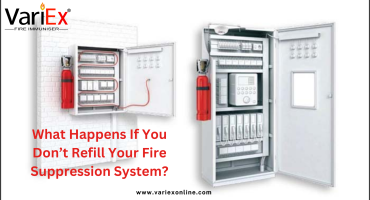![]()
Fire Immuniser
+91-7829629111
Email: info@variex.in
Varistor Technologies Pvt. Ltd.
Block-1, First Floor, Ardente Office One, Hoodi Circle, ITPL Main Road, Bengaluru, Karnataka 560048, IN
Is Standard For Fire Alarm
Is Standard For Fire Alarm
The issue of fire safety and protection extends beyond installing safety equipment and conducting routine fire drills. One of the quintessential devices in maintaining fire safety in any establishment, be it a residential home or commercial building, is a functional fire alarm system. These alarm systems are designed and installed according to specific standards to ensure optimum performance and reliability in case of an emergency. The present article aims to shed light on the standards for fire alarm systems, their importance, and their role in augmenting the safety and security against fire hazards.
Understanding Fire Alarm Systems
Fire alarm systems are designed to detect and alert individuals about the presence of smoke, fire, or carbon monoxide within a building. They consist of multiple devices, including smoke detectors, manual pull stations, alarm control panels, notification appliances like bells, and emergency evacuation signals. The fundamental purpose of these systems is to protect lives and property by providing early warning of a potential fire hazard, allowing for adequate time to evacuate the premises and alert fire response teams.
The Role of Fire Alarm Standards
For a fire alarm system to function efficiently and meet its designated purposes, it needs to adhere to a defined set of criteria, known as standards. Fire alarm standards are directives drafted by recognized bodies such as the National Fire Protection Association (NFPA), the International Code Council (ICC), and the British Standards Institution (BSI). These standards govern the design, installation, monitoring, testing, and maintenance of fire alarm systems.
Adherence to these standards is not merely a matter of regulatory compliance; it's a mercantile responsibility to ensure the safety of individuals occupying the building and the preservation of property. Standards serve the fundamental role of guaranteeing that fire alarm systems across different buildings are reliable, performance-optimized, fit-for-purpose, and consist of third-party-verified components that possess an appropriate level of quality, durability, and fire detection prowess.
 Significance of Standards for Fire Alarm
Significance of Standards for Fire Alarm
Standards for fire alarms signify more than just regulatory compliance. They contain the technical and performance-based requirements needed for a fire alarm system to function reliably. The standards detail the necessary attributes for each component in the system, including features for detection, signaling, control, power supply, and wiring practices.
Endowing systems with these features ensures that, in the event of a fire, the alarm combination operates optimally, generating alerts early enough to mitigate damage and save lives. Detailed instructions in the standards also provide clear guidelines on the installation and maintenance of these systems, thereby ensuring that they remain effective for longer.
Commonly Recognized Fire Alarm Standards
Across the globe, several standards regulate the functionality of fire alarm systems. The National Fire Alarm and Signaling Code, also known as NFPA 72, is one of the most recognized sets of guidelines in this respect. Made available by the National Fire Protection Association, this code compiles the latest safety provisions to minimize the effects of fire, explosion, and related hazards.
Another common standard is the British Standard BS 5839, which is a detailed specification for fire detection and fire alarm systems in buildings. This standard defines the codes of practice for the design, installation, commissioning, and maintenance of these systems in non-domestic premises.
Maintaining Adherence to Fire Alarm Standards
Maintaining adherence to fire alarm standards requires periodic assessment and regular maintenance of the alarm system. Regular checks and upgrades ensure that the system remains operational and capable of offering maximum protection when needed. Moreover, close adherence to the standards also helps businesses avoid substantial penalties, legal consequences, and damage to their reputation as a result of non-compliance.
Conclusion
In conclusion, the importance of standards for fire alarm systems in enhancing buildings' fire safety cannot be overstated. These guidelines ensure the reliability, quality, and durability of the system components, while their rigorous implementation ensures optimum system performance during emergencies. By adhering to global fire alarm standards like NFPA 72 or BS 5839, building owners can considerably amplify their fire safety measures, protect their occupiers, and secure their properties against fire hazards. Therefore, understanding these standards and ensuring adherence to them is not just an obligatory process to achieve regulatory compliance, but a crucial step towards engendering a safer environment.
Final Say
At VariEx.in and VariexOnline.com, we specialize in supplying and installing top-quality fire fighting systems and equipment. From fire extinguishers to advanced suppression systems, we offer comprehensive solutions tailored to your needs. Our experienced team ensures precise installation and maintenance for optimal safety.
Trust VariEx for reliable fire protection. Contact us online or call 7829629111 to learn more.
"WHAT YOU CAN READ NEXT"
 Read more +24 November 2023 in Fire Extinguisher
Read more +24 November 2023 in Fire ExtinguisherWhat types of fire extinguishers are available for different fire classes?
 Read more +11 April 2025 in Fire Suppression
Read more +11 April 2025 in Fire Suppression






